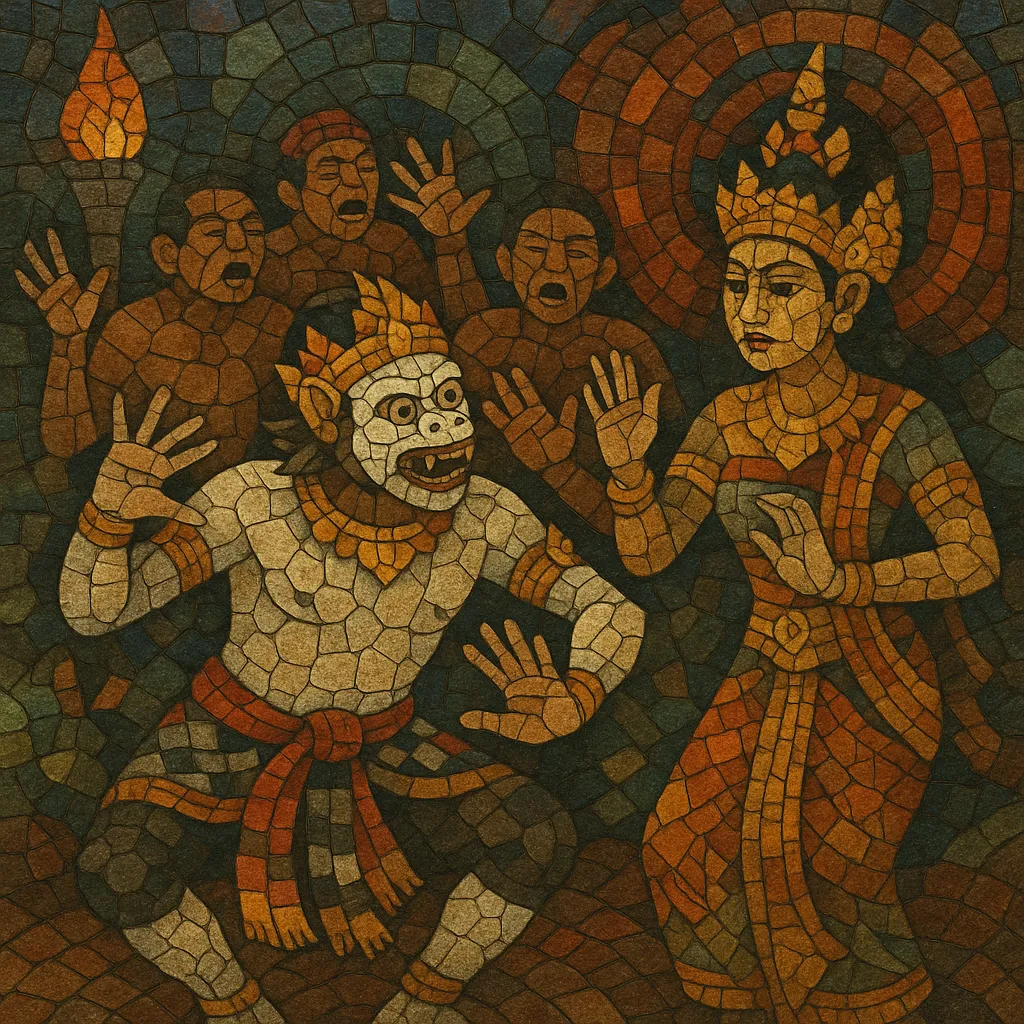Kecak is a Balinese vocal-percussive dance-drama often nicknamed the "monkey chant." It features large male choruses seated in concentric circles who interlock rapid-fire onomatopoeic syllables (most famously "cak, cak, cak") to create a dense rhythmic fabric that substitutes for a gamelan orchestra.
Unlike instrumental gamelan, kecak is entirely a cappella and relies on layered ostinati, antiphony, coordinated hand-claps, sways, and body percussion to produce colotomic accents and kinetic drive. It commonly accompanies episodes from the Ramayana (especially the rescue of Sita), while incorporating trance sequences inherited from older Balinese ritual theatre (sanghyang).
Today, kecak is both a living ritual-inflected tradition and a staged spectacle presented at temples and village banjars across Bali, noted for its enveloping, polyrhythmic sound and dramatic, torch-lit staging.
Kecak’s roots lie in Balinese sanghyang trance rites, where protective spirits were invoked through collective chanting and movement. In these ceremonies, a chorus produced percussive vocal patterns that supported trance dancers and communal exorcistic purposes.
In the early 1930s, dancer I Wayan Limbak and German artist Walter Spies helped adapt sanghyang-derived chant into a theatrical form that could narrate Ramayana episodes. This collaboration formalized the large male chorus, clarified cueing methods, and shaped a stage-ready structure recognizable as modern kecak, while preserving its ritual aura.
After World War II, Bali’s cultural profile rose internationally. Kecak became a signature performance for visitors, with village sekaa (troupes) codifying nightly shows at temples and community halls. While tourist demand encouraged standardization and spectacle (torches, large ensembles, fire scenes), local groups retained links to ritual lineages and village identity.
From the late 20th century onward, recordings, documentaries, and film/TV syncs introduced kecak’s distinctive chorus to global audiences. Composers and sound designers cited its interlocking, gamelan-like vocal textures as an inspiration, and it became a touchstone for choral percussion and “tribal” cinematic atmospheres.
Today, kecak remains a community-based performance tradition across Bali—most famously at Pura Luhur Uluwatu and in Ubud—featuring 50–100+ chanters, Ramayana dance-drama, and, at times, sanghyang-derived fire-trance segments. It functions simultaneously as cultural heritage, communal artistry, and a powerful example of vocal orchestration.


